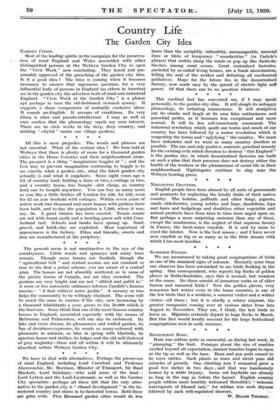The general scene is not unattractive to the eye of
the countryman. Little woods and spinneys and many trees remain. Though some houses are freakish, though the " agricultural belt " and central avenue are not constant or true to the first a priori scheme, you are aware of a central plan. The houses are not absurdly scattered, as in some of the prairie towns of Canada, nor are they crowded. The gardens are very bright and are not " ribbed and paled in." A more or less autocratic ordinance inforces Candide's famous maxim : " it faut cultiver notre jardin." A nursery or two helps the community to be willingly obedient. The scene will be much the same in essence if the city, now increasing by a thousand inhabitants a year, grows to the 50,000 which is the final aim. Some think that one of the most famous country houses in England, associated especially with the names of Melbourne and Palmerston, will one day be embraced. Its lake and trout stream, its pleasaunces and walled garden, its line of deciduous cypresses, its woods as many-coloured with
pheasants in autumn, as blue in spring with bluebells, its spacious house and stables, its lodges and the old mill (beloved of grey wagtails)—these and all within it will be ultimately absorbed within Welwyn Garden City.
* * *
































 Previous page
Previous page